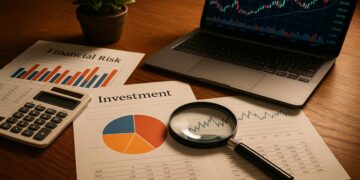The importance of the balance sheet in the evaluation of American companies

Understanding the Balance Sheet
A balance sheet is not merely a collection of numbers; it is a comprehensive financial portrait of a business at a defined moment in time. This essential document presents a clear picture of what the company owns (its assets), what it owes (its liabilities), and the residual interest of its owners (equity). Grasping the intricacies of a balance sheet is fundamental for various stakeholders, including investors, management, and creditors, as they navigate the financial landscape of the organization.
Key Components of a Balance Sheet
The balance sheet is typically organized into three core components:
- Assets: Assets are classified into current and non-current categories. Current assets, like cash and accounts receivable, are expected to be converted into cash within one year. In contrast, non-current assets, such as property, plant, and equipment or intellectual property, provide long-term value to the company. A company like Apple, for instance, lists substantial intangible assets, including patents and trademarks, which significantly contribute to its market value.
- Liabilities: These are obligations the company must fulfill. They can be current liabilities, like accounts payable and short-term loans, or long-term liabilities, such as mortgages and bonds payable. A business’s ability to manage its liabilities effectively is critical; a high ratio of liabilities to assets might indicate underperformance or financial distress.
- Equity: This component reflects the owners’ stake in the company after all liabilities have been deducted from assets. Equity comprises common stock, retained earnings, and additional paid-in capital. If a company goes public, as many startups do, the equity structure becomes critical for understanding ownership distribution and shareholder interests.
The Role of the Balance Sheet in Decision-Making
For American companies, the balance sheet serves various critical functions in decision-making processes:
- Investment Decisions: Investors closely examine the balance sheet to evaluate a company’s stability. A strong balance sheet, characterized by high asset levels relative to liabilities, can attract investment as it indicates a safe place for capital. For instance, Tesla’s rapid growth has enticed numerous investors who analyze its balance sheet to understand its financial health and potential returns.
- Lending Considerations: Banks and financial institutions evaluate a company’s balance sheet to assess its creditworthiness. A positive debt to equity ratio suggests that a company is not overly reliant on debt, making it a more appealing candidate for loans. Conversely, a daunting load of liabilities may lead lenders to reject financing requests.
- Market Comparisons: Analysts leverage balance sheets to benchmark companies against their peers in the same industry. This comparative analysis sheds light on which businesses are thriving and which may be struggling. For example, comparing the balance sheets of two major retailers can reveal market positioning and operational efficiency, guiding investors favorably.
Conclusion
In the dynamic and often unpredictable landscape of the economy, the balance sheet is a vital tool that encapsulates not only the financial health of an organization but also potential risks and opportunities. Stakeholders depend on this document to foster transparency and encourage astute financial planning. A thorough understanding and effective interpretation of a balance sheet can fundamentally influence an organization’s direction, setting the stage for sustainable success and growth in an ever-evolving business environment.
SEE ALSO: Click here to read another article
The Significance of Asset and Liability Management
In the intricate world of business, the balance sheet serves as a beacon guiding both management and stakeholders through the financial landscape. The emphasis begins with the careful classification and analysis of assets and liabilities, as these two components are pivotal in assessing a company’s financial posture. Understanding how these elements interact not only aids in daily operations but also influences long-term strategy.
Assessing Financial Strength Through Assets
Assets are the lifeblood of a company. They represent the resources that a business can leverage to generate revenue and achieve growth. It is essential for stakeholders to discern the quality of a company’s assets. While a burgeoning total asset figure may seem promising, it is the composition of those assets that tells a deeper story. For example, if a large portion of a company’s assets consists of inventories or accounts receivable, it could signal liquidity risks, particularly if the company faces slow sales or collections issues. In contrast, a robust share of liquid assets, such as cash or quick-to-sell securities, reinforces a company’s ability to weather economic downturns.
Liabilities: Understanding Financial Obligations
Equally important in the balance sheet narrative are the company’s liabilities, which necessitate meticulous management. Liabilities indicate how much a company owes and entail significant implications for its financial health. A company burdened with high amounts of debt may struggle to meet its financial obligations during difficult periods. Stakeholders must scrutinize both the current liabilities—due within a year—and long-term liabilities to ascertain how the company’s obligations might affect its operational capacity. Understanding ratios such as debt to equity provides insights into how much leverage a business employs; a high level of debt can reduce financial stability and attract scrutiny from investors and lenders alike.
Quality of Equity: Owner’s Valuation
The third pillar of the balance sheet, equity, is equally crucial for evaluation. This component reveals the net worth of a business—essentially what remains after liabilities are subtracted from assets. Investors typically pay attention to retained earnings and how well a company reinvests its profits to foster growth. An upward trend in equity can signify a robust business model and promises future returns, enticing more confident investment. Conversely, stagnation or decline in equity can raise red flags regarding a company’s performance in the marketplace.
Conclusion
In summary, the balance sheet serves as a critical document that encapsulates the essence of a business’s financial standing. Understanding how assets, liabilities, and equity interact not only provides a snapshot of current stability but also paves the way for informed decision-making by all stakeholders involved. By dissecting these fundamental components, American companies can make more strategic choices that align with their long-term vision while fortifying trust with investors and lenders alike.
CHECK OUT: Click here to explore more
Insight into Financial Ratios and Performance Metrics
As stakeholders dive deeper into the analysis of a balance sheet, they soon encounter a vital toolkit: financial ratios. These ratios enable a more nuanced understanding of a company’s performance by providing points of reference that simplify comparisons with industry peers or historical financial data. By evaluating these key indicators, stakeholders gain insights that transcend mere numbers, illuminating the underlying health and sustainability of the business.
Liquidity Ratios: Ensuring Short-Term Viability
One of the foremost considerations in any balance sheet analysis is the liquidity ratio, which illustrates a company’s capacity to fulfill its short-term obligations. A particularly prominent measure is the current ratio, calculated by dividing current assets by current liabilities. A current ratio greater than one suggests that the company possesses more assets than liabilities due in the near term, a reassuring sign for creditors and investors. In contrast, a ratio below one may prompt concerns regarding potential liquidity issues. Seasonal variations in cash flow, for instance, can greatly impact this ratio, making it crucial for businesses in industries like retail to monitor their balance sheets closely during peak seasons.
Debt Management: Exploring Leverage Ratios
Another pivotal group of ratios involves assessing debt levels and financial leverage. Ratios such as debt-to-equity and debt-to-assets gauge a company’s reliance on debt versus equity for financing. These ratios help to interpret risk; a high debt-to-equity ratio may signal over-leverage, presenting challenges should interest rates rise or adverse economic conditions materialize. For American companies, particularly those seeking to expand operations, understanding this balance becomes all the more critical. When companies are armed with healthy leverage ratios, they can navigate opportunities and challenges while maintaining investor confidence.
Operational Efficiency and Return Metrics
The balance sheet also serves as a backdrop for measuring operational efficiency and profitability through metrics like return on equity (ROE) and return on assets (ROA). These ratios, derived from both the balance sheet and income statement, serve to elucidate how effectively a company converts equity into profit or utilizes its assets to generate earnings. A higher ROE indicates that a company is adept at generating profits from its equity base, while a robust ROA signifies efficient asset management. American companies that consistently demonstrate favorable growth in these metrics may attract an influx of investments, creating a positive feedback loop that fuels further expansion.
Integration of Non-Financial Factors
Moreover, modern evaluations increasingly incorporate non-financial factors alongside traditional balance sheet analysis. Elements such as corporate governance, environmental sustainability, and labor practices can significantly sway investor perceptions. Stakeholders today recognize that a strong financial position, evidenced through a well-structured balance sheet, should also resonate with ethical and responsible practices. This holistic approach to evaluation is gaining traction across American business landscapes, underscoring the necessity of aligning financial health with social responsibility.
In essence, the balance sheet serves not only as a historical summary of a company’s financial condition but also as a vital instrument for assessing viability, risk, and growth potential in a competitive market. Understanding the intricate interplay of ratios and their implications can empower American businesses and their stakeholders to chart effective strategies and navigate the complexities of the economic environment more adeptly.
SEE ALSO: Click here to read another article
Conclusion: The Integral Role of Balance Sheets in Corporate Evaluation
As we reflect on the multifaceted nature of the balance sheet, it becomes clear that this financial document is far more than a mere snapshot of a company’s financial condition. It acts as a comprehensive tool that not only organizes assets and liabilities but also serves as a pivotal instrument for assessing liquidity, leverage, operational efficiency, and risk management. For American companies navigating an ever-evolving economic landscape, the strength of their balance sheet can significantly determine their market positioning and growth trajectory.
The nuanced analysis of financial ratios derived from the balance sheet provides stakeholders—from investors to creditors—a valuable lens to assess financial health and sustainability. These metrics enable informed decision-making, whether it’s evaluating investment opportunities or forecasting cash flow challenges. Additionally, the inclusion of non-financial factors into evaluations marks a progressive shift in corporate responsibility, highlighting that a company’s ethical standing can be as influential as its financial performance.
In the competitive realm of American business, understanding the interplay between financial liabilities and asset management is crucial. Companies with a strong balance sheet not only exude confidence but also foster trust and security among stakeholders. Therefore, as the business environment continues to evolve, leaders must recognize that a keen focus on balance sheets—paired with an ethical approach to operational practices—will empower them to thrive and adapt. The journey towards sustainable success in the corporate world undoubtedly begins with a clear understanding of one’s balance sheet.

James Carter is a financial writer and consultant with expertise in economics, personal finance, and investment strategies. With years of experience helping individuals and businesses navigate complex financial decisions, James provides practical insights and analysis. His goal is to empower readers with the knowledge they need to achieve financial success.





